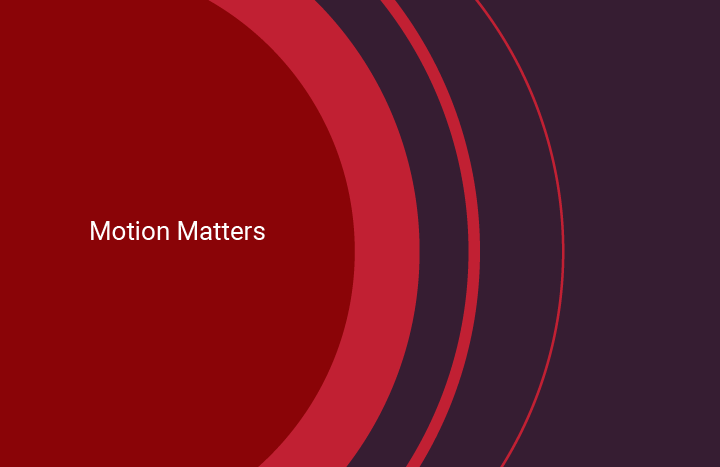Social Distancing at Work: Tips for Transitioning to Working from Home
Update: We've all been working from home for a few weeks now (well, TBH, we've been doing it for the past 11 years), so join us April 8 at 3 p.m. for an NCET webinar called "Next-Level WFH Tips: Creativity & Collaboration." Stay tuned for the link. In the meantime, below, read more insights about working from home provided by our team of remote employees.
We’ve all been seeing the calls to #FlattenTheCurve – essentially, the idea is that taking precautions like social distancing will help slow the spread of this novel coronavirus infection, thus reducing the number of active cases and giving a stressed healthcare system more time to better prepare and be less overwhelmed.

The idea of social distancing at work translates to what the Centers for Disease Control (CDC) is calling “telework.” Whether you call it that, telecommuting, virtual or remote work, the bottom line is to not come to the office, and instead to work from home.
The Estipona Group has operated for the last 11 years (of our 27) as a virtual agency, meaning our team works primarily from our home offices. With that in mind, we’ve put together some ideas about how to prepare to work remotely as many of us consider employing social distancing techniques that may contribute to better health outcomes in our community.
Keep in mind: Businesses typically develop a comprehensive work-from-home policy — one with specific requirements, checklists, expectations, etc. But in the event you are considering a quick solution to this constantly evolving pandemic, you might have to learn as you go. Below, we’ve provided some ideas on best practices, including tips from our team. These are not comprehensive by any means, considering all businesses will have their own intricacies; but they should provide a good place to start!
Creating a Workstation
Making the decision to work from home isn’t as simple as taking a laptop and connecting to the internet; it’s going to require a dedicated space, ample bandwidth and a whole lot of research about the hardware and software you’ll need in order for the team to get the work done. One quick remote-working tip: Using Google Docs allows many people to be operating from the same files without duplication — and is a free tool that everyone can access. Set up necessary folders in Google Docs, add key team players and dole out the access privileges.
Questions to ask/answer before your team tries this at home:
- What hardware and software will you need to work off-site?
- Do your employees have adequate internet connectivity?
- What virtual interfaces will you use — Zoom, Skype, Ring Central, etc.? Are all employees able to login?
- Do you have safeguards in place to protect any proprietary information?
- Do employees have the necessary access privileges to company intranet and/or files?
- Are there essential documents your employees will need at home?
- Do your employees all have dedicated spaces and the appropriate furniture at home from which to work?
Quick tips and insights from our team:
“Even in the chaos of my temporary desk on the dining room table during our endless remodel, I try and keep it a tidy-ish ‘workspace’ and not let laundry or mail pile up on the other end of the table.” — Creative Director Paige Galeoto
“It's important to designate a workspace. Even if you don't have the space for a home office, set something up for yourself so you're not working from your bed or couch. This could be a section of your dining room table or kitchen island. When you're in your designated workspace, you're working, it's far too easy to get cozy and unmotivated if you're on your sofa.” — Account Executive Chelsey Brice
“A few good music playlists are very important to keep your energy level high.” — CEO Edward Estipona (PS Our team even has our own playlist, if you’d like to give it a listen. Search “Estipona Loves” on Spotify.)
Communication Expectations
As it is with most things in life, communication is key when it comes to telecommuting. The worst way to approach remote work is to equate it with working in isolation; in fact, at the Estipona Group, we likely communicate more frequently than many of our bricks-and-mortar agency counterparts because we are proactively communicating and collaborating in an effort to NOT be working in virtual vacuums. Plus, considering we don’t have offices or cubicles that we can pop in/out of, we actually enjoy the idea of deliberately talking with each other to get ideas and to seek clarification on tasks.
Questions to ask/answer before your team tries this at home:
- Do employees know what hours they are expected to work?
- How will employees “clock in/out” and/or track their time?
- Will you require regular check-ins from your team? If so, how many, and by which tools (message, video, phone, etc.)?
- What type of calendaring system will you use for meetings and tasks?
Quick tips and insights from our team:
“Glip (Estipona Group’s team collaboration tool of choice) and short phone calls are my best friends when it comes to communicating in our virtual environment. Popping off an IM to a coworker or being able to jump on a quick call when needed, is key to making sure we're all on the same page about client and internal work.” — Digital Coordinator Dani Rawson
“If I don't have meetings, I purposefully block out solid work time to get most of my work done, but I will also call people whether it be co-workers or clients to make sure I interact with people. This allows me to feel less alone and a part of something. Honestly, I feel that some of the best connections I have with people happen at that time because there aren't any interruptions from co-workers walking into my office.” — Big Kahuna Edward Estipona
Personal Considerations
So not to be alarmist and whatnot, but there’s a chance you’ll be joined in your home during your remote work period by one or more people — namely spouses also working from home, roommates or tiny people vying for your attention who call you some variation of “Mom” or “Dad.” Rest assured, you’ll need rules and guidelines — like how to ensure people know you’re working, not “working.” Plus, working from home can feel isolating, so you’ll potentially be dealing with some blues as well — especially at first, considering it’s an adjustment. It does get easier over time.
Questions to ask/answer before your team tries this at home:
- What boundaries will you need to create? Consider space, time, etc.
- How will you overcome the loneliness you may experience?
- Where is your own personal “blue zone” — the spot in your home that is quietest and still has good cell/wifi reception?
Quick tips and insights from our team:
“I purposefully shower and get dressed for work every morning, as it doesn't change my routine whether I'm virtual or bricks and mortar. While working in my pajamas is tempting, I think keeping my morning routine the same as it was during my normal morning ritual when we were bricks-and-mortar has helped me make that adjustment.” — Head Honcho Edward Estipona
“I’m with Edward on the shower thing.” — VP of Public Relations Jackie Shelton
“So are we. ^^” — The Remainder of the very clean Estipona Group Team
“My water cooler to get my creative juices going can be walking out on the front porch in the sunshine or checking on my garden. Just getting up from my computer, getting my blood flowing and giving my brain a rest as I don't have co-workers to chit chat with.” — Creative Director Paige Galeoto
“My dogs can tell when I hit a writing wall and need to move around. They bring their leashes to me to let me know what my options are.” — VP of PR Jackie Shelton
Doing the Work
The “funny” thing about working from home (super-intentional air quotes around “funny”) is that you’ll likely find yourself working around the clock, but you might also be far more productive. After all, you don’t have as many distractions (unless you are around aforementioned tiny humans or other needy housemates), and you’ll constantly have access to work. On our team, we find ourselves working our traditional 8-to-5s, but you’ll also find us on Glip at all hours of the night/morning. Because who needs sleep when you can be working? (I’m kidding, but seriously.)
Questions to ask/answer before your team tries this at home:
- How will you remotely collaborate?
- How will your team handle breaks?
- What processes and procedures do you have in place to ensure tasks are tracked and projects are being approached efficiently?
Quick tips and insights from our team:
“It’s easy to screen share (with the right software) if you want to go over a document together.” — Creative Director Paige Galeoto
“Video conferencing is a fantastic way to stay connected without leaving your home office. It's nice to be able to see people's faces when you're meeting, particularly if you're brainstorming of having difficult conversations.” — VP of Public Relations Jackie Shelton
Now Is the Time for a Test Run
If allowing employees to work remotely is part of your social distancing plan, try a test run with a few (or all) of those who might work remotely. This will allow you to identify potential holes in the process. Here’s a quick tip: Just as some households have “go bags” full of essentials to grab in the event of a natural disaster, have your employees who are doing the test prepare a list for their “go-home bags.” This will be the things your team will need to grab from the physical office before heading to their new virtual one.
With test-runs ran (sounds weird, but you get the idea) and processes refined, you’ll be ready to go if/when you decide to make the transition to a virtual world of employment.
Now go forth, and work from home! Let’s all help #FlattenTheCurve and contribute to a healthier community, one remote worker at a time.
Mikalee Byerman is VP of Strategy for the Estipona Group and a proud social distancer, who prefers greetings of *jazz hands* when you see her in public. Email her with questions or if you have favorite telecommuting tips she can add to her arsenal.



